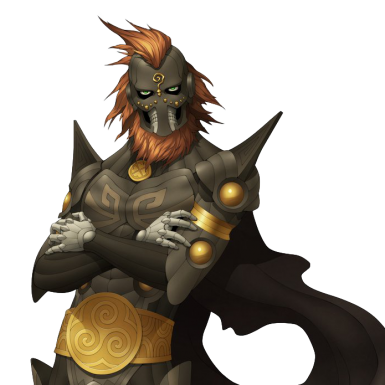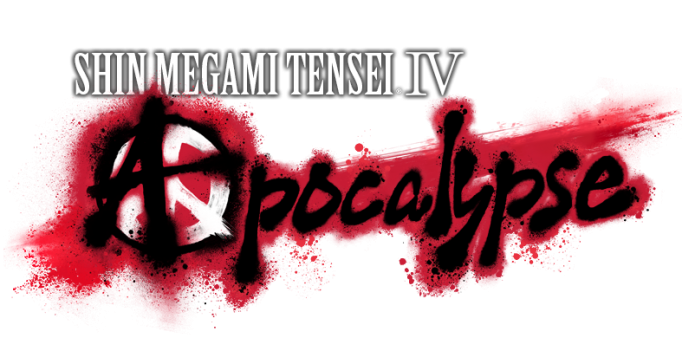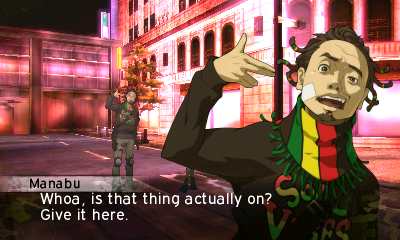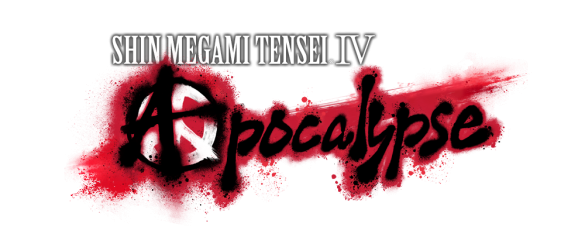
Click here for the audio version!
The Shin Megami Tensei series holds a very special place in my heart, especially 2013’s Shin Megami Tensei IV. It’s the reason I got a 3DS in the first place, and ever since I booted it up it fascinated me with its huge scale and unique way to tell a story. While many people might see it as an unfair game with a “boring” story, it was an incredibly deep game that you were able to get out of it exactly how much you put in, and one of my favorite games on the entire console. I was in a public place when Shin Megami Tensei IV: Apocalypse was announced, and I legitimately got giddy in front of a large number of people (It was at a mall, and I kind of jumped around a bit). Not my proudest moment, but nearly a year has passed and I’m just as excited now as I was then.
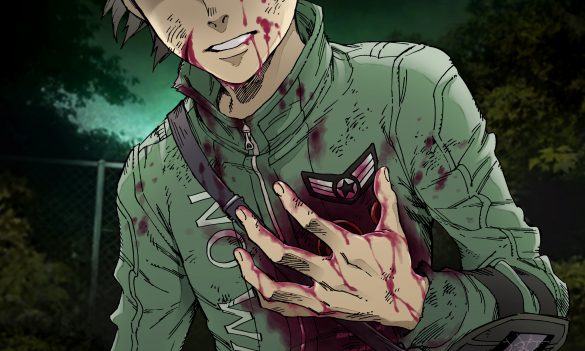
This game stands as a weird entry in the mainline series of SMT games. It exists not necessarily as a sequel to IV, but an alternate version of the Neutral ending route. It’s a bit of a sequel, interquel, and side story all in one. Confusing? Definitely, but a good way to describe it would be to quote the brief opening: “Another future… that continues from the present…”. Having said that, you don’t really need to have played the original game to enjoy this, but like most games of this nature you will probably appreciate a few things a bit more if you have that knowledge going into this game. There are a lot of returning characters, but their roles are explained well enough for newcomers to be completely caught up. The story also deviates enough from the original game where people won’t feel like they are missing out because they don’t know everything from the original game.
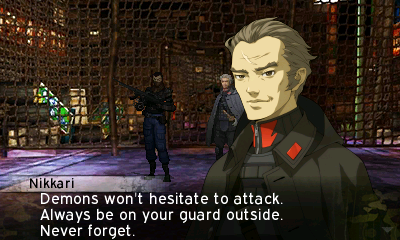
In Shin Megami Tensei IV: Apocalypse, you play as a boy named Nanashi living in post-apocalyptic Tokyo, where demons roam the streets and the city is domed off from the rest of the world. There’s hope for the people of Tokyo- because of events from SMT IV, the people look up to a mysterious samurai named Flynn, who is the protagonist from IV, from above the dome as the savior. Nanashi wants to be a hunter, and while scavenging with his group one day his life is ended abruptly. He encounters a mysterious deity named Dagda in the underworld, who gives him a chance to come back to life if he becomes Dagda’s own personal Godslayer. The premise of Apocalypse is one of the coolest I’ve seen in a long time, and the game effectively makes you start from absolutely nothing and slowly build yourself up to be an insanely cool bad-ass. From the beginning, the tone of the story sets it up for you to feel at the bottom, and Flynn’s inclusion as an idol to the player and characters makes you want to try your best to make the previous protagonist proud, building yourself up to be just as good. I should also mention that Flynn’s transition from silent protagonist to voiced character was also incredibly well done, and he feels just as real as the rest of the cast.

The story of Apocalypse itself was an interesting experience, as it’s very different from IV’s story. When I started it, I noticed immediately that the game handles its story with a lot less subtlety then IV did, which was incredibly lore-heavy and driven on subtle plot elements. Most people thought of it as boring or poorly written, but it was the kind of game where putting work into talking to NPCs and finding clues for yourself would reveal to you just how deep the game was. All of that is still here, but the story is a lot more in your face with its themes and plot points. This bugged me a bit during the beginning, but as time went on I ended up getting over it. They took a lot of feedback from people on how slow IV’s story was and managed to keep things entertaining right from the very beginning. Despite my small grievances on tone, there wasn’t a single moment where the story didn’t enthrall me with where it went and the characters I spent my time with. The endings are also worth noting as a departure for the mainline, as instead of Law, Chaos, and Neutral there are two Neutral themed endings. I don’t want to say too much because of spoilers, but they are both satisfying in their own ways for an SMT game.
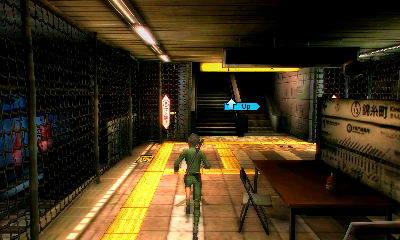
Gameplay is one of the most important parts of a SMT game, and even those who thought IV’s story and characters weren’t anything special could usually agree the gameplay was addictingly good, albeit a little unbalanced. I’m pleased to say basically every issue from the original game has been addressed and corrected, making this one of the best gameplay experiences you’ll even have in this entire franchise. Exploration was a big factor in IV, and Apocalypse remains faithful to the spirit of its predecessor. Not only does running around the massive city of Tokyo look and feel great, but there is always something worth your time to explore, and I felt that I never wasted any time by exploring a bit. Side quests, which required you to not only go to Hunter Associations to add more to your list but also have to choose one at a time, are now completely redone and has all of the available sidequests appear at once in the world. Something else people might find nice is that reviving to where you were no longer costs play coins or in game money. There are so many quality-of-life improvements to the formula that listing them all would require a few more paragraphs!

Apocalypse keeps IV’s battle system, where enemies appear as data-like monstrosities on the map that you can chose to avoid or slash to engage in a battle. Once in battle, you are treated to turn based, first person combat where you live and die by exploiting enemy weaknesses. Strategy is essential to surviving the challenging difficulty in Apocalypse, but if you use the battle system to your advantage you will find one of the most addicting combat systems you’ve ever experienced. New to this game is the ability to choose your partner character and the ability for your entire party to unleash a group attack once their meter builds up enough (which increases at the end of every turn). The Smirk feature of the original game has also been rebalanced to make it a bit fairer on both sides, and I think this is a really good change. The way Smirking works is that if you or an enemy exploits a weakness in battle, you have a chance to get a Smirk status, which greatly increases the chance of causing instant kills and status effects, as well as giving you a guaranteed critical hit. Lastly, another important change in battle would be that dark and light skills no longer have an only small chance of hitting with a definite chance of instant killing the opponent, but they do damage now and their instant kill percentage is just highly increased by Smirking. I personally think it was a really good change that had me using those skills way more than I did in the original.
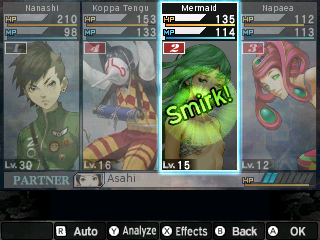
I’ll be brief in saying that the art, presentation, and UI are absolutely fantastic. The blue theme the UI gets in this game is much cooler than the original game’s, and the art and budget follow. All the demons drawn by guest designers have been redrawn to match the style of the rest, and the character designs for new characters look just as great. This is only made better by the fact that Tokyo remains as beautiful as it ever did. The game really pushes the limits of what the 3DS can do and is easily the best-looking game on the entire console that I’ve seen. Not only that, but despite the insanely detailed areas (which there are A LOT of), I never noticed the frame rate drop a single time.
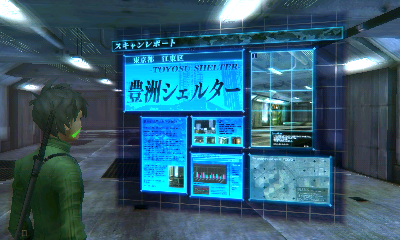
I think most people who have played SMT IV can agree the soundtrack was one of that game’s finest attributes. There was a total of 107 tracks in the original game (spanning FOUR DISCS in the physical release- just a fun fact), with each song fitting the tone required of it. From songs fitting the old fantasy-like tone of the Eastern Kingdom of Mikado, to the techno-themed tracks taking place in the dark and demon-filled city of Tokyo, there was such a wide variety of amazing songs that many people remember fondly. To my knowledge, every single song from that game is featured in this, along with 37 brand new tracks made just for this game. I have to say that the music for this game blew my expectations out of the water. I didn’t really think they could make songs that could compete with one of my favorite soundtracks in all of gaming, but they definitely lived up to its predecessor’s legacy. The music of Apocalypse pays homage to the musical themes that made the original game’s music be so memorable while also experimenting and being unique. Not to mention, some of the songs exclusive to this game reach insane levels of hype the original game’s OST couldn’t.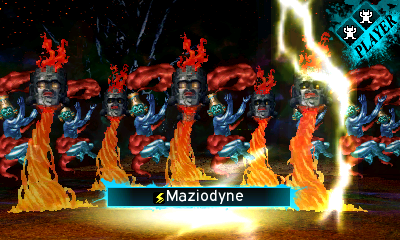
I should also mention the voice acting of the game, which as a whole is indeed good but a bit lower quality then SMT IV’s. For one, some of the important returning characters’ voice actors could not return for this game, (Navarre and Nozomi were previously voiced by Liam O’ Brien and Laura Bailey respectively) and took a bit to readjust to. Many of the shop keepers and minor characters have different voice actors as well, and it leads me to believe that Atlus USA had to hire a bit more lesser-known voice actors this time around. There are sadly more than a few awkward line deliveries in this game, and that was never at all a problem in SMT IV. The main cast, however, is really solid and voiced pretty believably, so it’s really only a problem with the minor characters. I’d like to give big props to Dagda’s English voice actor- he nailed the role perfectly and delivered a chilling performance (I also love how they gave him an Irish accent. It’s voiced so well that I found it an absolute joy to listen to).
Overall, Shin Megami Tensei IV: Apocalypse is a fantastic game for both veteran fans and newcomers alike. While I originally had my doubts about the way the story was told, it never stopped me from enjoying basically every second I was playing. The only other downside was the occasional weirdly-voiced line, but besides that this game had me utterly hooked. I loved the callbacks to the original game, and as a big fan of what I considered to be an overlooked gem on the 3DS, I can say this game has left me incredibly content.

- Shin Megami Tensei IV: Apocalypse is better in most things than Shin Megami Tensei IV, but in terms of lore, it isn’t as good Shin Megami Tensei IV. You know you’re dealing with a great game when there really isn’t anything to say it’s worse than in its own series.
- If you get Addicted to this, look up “Shin Megami Tensei 3DS” on Amazon and go nuts.
- A better name for this would be How To Piss off Gods and Demons: For Kids!
- Buy/Rent/Enjoy: Definite buy. First-print orders also come with really neat metal alignment pins that I can’t wait to get my hands on.
- Did I mention how great Dagda is? Irish and angry 24/7, it’s kind of adorable. I mean look at how angry he looks!
